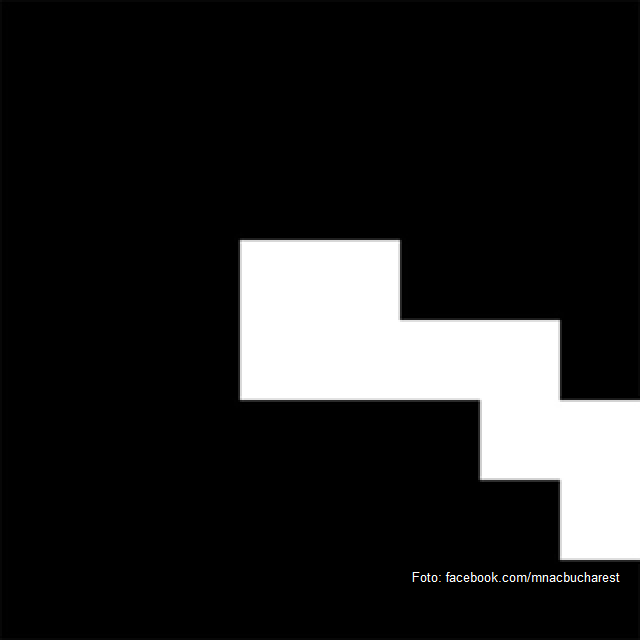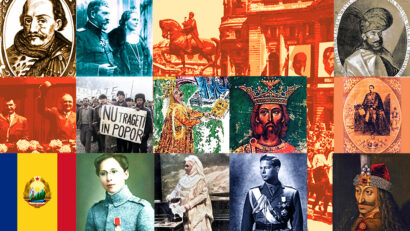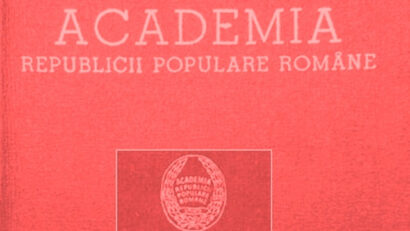Gift-offering as an exercise in power, in communist Romania
Communist -era items exhibited in Bucharest

Steliu Lambru, 15.11.2021, 14:00
Personality cult in the case of political
leaders is a common trait in all historical ages. Flattering the leaders is part
and parcel of a deeply-engrained human psychological mechanism. On one hand, it
has something to do with the human being’s wish to receive over-the-top recognition
as a sign of their power. On the other hand, it has something to do with the
human being’s wish to climb up the social ladder, undeservedly, more often than
not. However, over and above such an old practice, dating from time immemorial,
we find the political leaders’ personality cult as a hallmark of fascism and communism. In Romania,
the communist regime was no exception to the rule. Between 1965 and 1989, the
communist leader Nicolae Ceausescu was the figure head around whom a blatantly
wanton personality cult revolved.
Such an exaggerated praise
of the political leader was in fact an outgrowth of the regime’s brutality. In effect, praising the leader translated into hyper-eulogizing
newspaper articles, grandiose shows on stadiums, parades, television and radio
shows, official birthday ceremonies. Offering presents was a significant part of
the personality cult. Presents were offered by economic entities, by craftsmen,
by people from all walks of life or by foreign cultural and scientific personalities.
Throughout the years, the presents received by Elena and Nicolae Ceaușescu made a special
collection, as their diversity was literally spectacular. Paintings and
sculptures alone make a nonesuch collection of works, whereby painters and
sculptors were elbowing each other out, in their bid to pay their respects to
the two communist leaders.
Thirty years were marked
in 2019 from the December 1989 revolution, when the Ceausescu regime was
toppled. On that occasion, the Museum of Contemporary Art in Bucharest brought out
a small-sized, 440-page album. The work included reproductions of paintings and
various other works of art, dedicated to Elena and Nicolae Ceausescu. The album
is somehow a sequel to Cornel Ilie’s A Portrait for the comrade, including reproductions
of objects in the collection of Romania’s National Museum of History The latter
album was published a year earlier, in 2018.
Calina Barzu is a museographer with
the National Contemporary Art Museum’s Photography Archive. Calina is also a
curator of the tribute art exhibition. Ms Barzu didn’t fail to mention the parallel
exhibition mounted on the premises, including items that were part of the then
the automobile owners, members of the Retromobil club. Integrating day-to-day
objects into the tribute exhibition is a way of understanding the spirit of the
time when two generations of Romanians lead their lives, between 1945 and 1989.
The
exhibition was put together based on the 2019 catalogue that marked 30 years
from the Revolution. It is a selection of the tribute works from the collection
of the museum. The exhibition brings together works authored by well-established
artists, in front of the onlookers and visitors, but also works made by ordinary
people or working teams, works that were part of the heritage of the museum’s
collection. The exhibition was initiated in December 2019, it had several
episodes or series where the collections objects were on display. We initiated
a collaboration with Retromobil Romania, they joined us along this theme and
came up with several items belonging to their members’ collections, with automotive-related
exhibits. The Retromobil items on
display range from driving licences, automobile publications, maps, magazines
and board notebooks. We also have a fridge that could be encased in the trunk
and a TV set which could also be encased in the car’s accumulator. We have several
registration plates and each of them has a story of its own, how they were
rated according to the social class. We also have automobile objects that could
be included in the travel kit. We also have a selection of archive images
featuring pictures of cars.
Small-sized though it is, the
catalogue of tribute items at the National Museum of Contemporary Art quite aptly
highlights the propagandistic charge of the tribute works of art. Sabin Balasa (1932-2008), was one of the most highly acclaimed painters of the Ceausescu
regime. In the album, he was included with The Ceausescu Era, a painting he made
in 1988, oil on canvas, 120
x 150 centimetres. The work depicts four miners looking forward, against a
half-dark, blue background. Here is Călina Bârzu once again, this time telling
us what special items has the museum exhibited, which were part of the Ceausescus’
presents collection.
The special items in our collection include scale models
of the presents sent by the people or by the enterprises that offered those
presents. One such object, which is rather more special, showing a lot of
creativity, performance and quality, is this present received from the Aeronautic
Enterprise in Bacau, which also has a dedication for the two. It is a scale
model of an airplane, symbolizing the work of the factory staff. Part of our items
come from the original collection of then the Museum of the Romanian Communist
Party and the Art Museum. It is a similar manner to place
the leader centre-stage. The objects were supposed to illustrate the achievements
of the factory, on one hand, but also his own achievements, on the other hand, they
spoke about how he succeeded to bring the entire technological process and
about the fact that it was entirely thanks to him that all the economic achievements
were possible, thanks to him and to the work of the people. Everything was possible thanks
to him, since he succeeded to contribute to the people’s progress and well-being.
Most of the objects are in a good preservation condition.
The tribute exhibition
of presents received by Elena and Nicolae Ceausescu, hosted by the Museum of
Contemporary Art, has a plain message for today’s generation: under a dictatorship,
valuable as it may be, fine art falls outside the scope of a free spirit.
(Translation by Eugen Nasta)





























